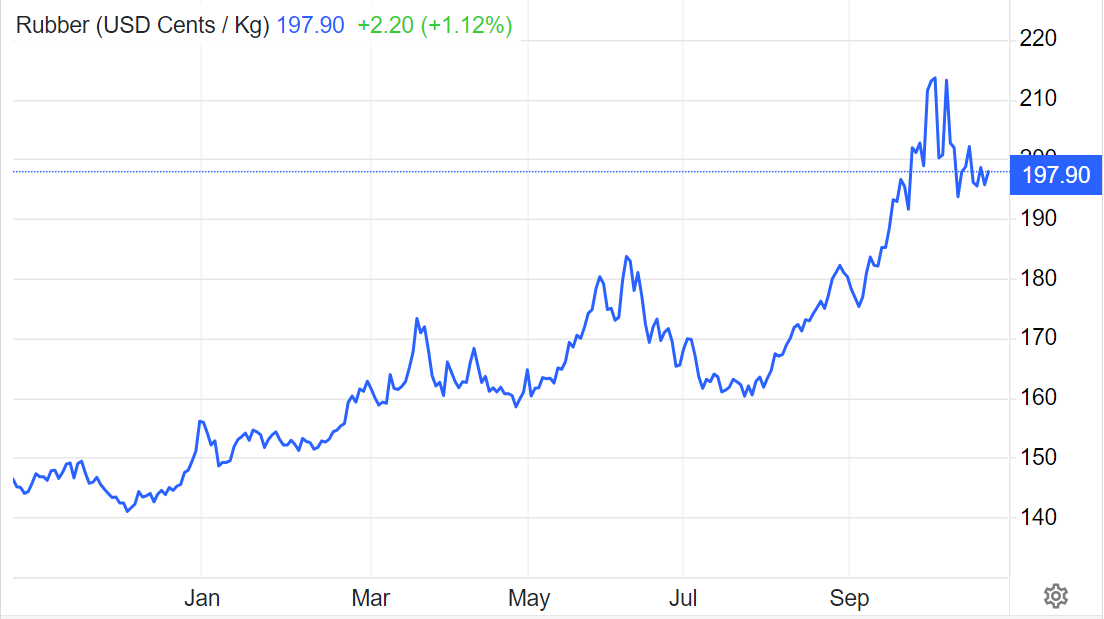Natural Rubber Prices Surge but Face Correction
Since September, natural rubber prices have risen sharply, reaching their highest level since March 2017. This price increase was driven by strong external macroeconomic sentiment and favorable market conditions. However, prices have recently started to fall, and due to limited supply and weak demand, prices are expected to face pressure and potentially undergo a correction in the fourth quarter.
Supply Issues
This year, climate conditions delayed rubber production in major regions like Southeast Asia, especially in Thailand, Indonesia, and Malaysia. Extreme weather, including droughts and heavy rains, caused disruptions in rubber tapping and reduced output. For example, Malaysia, once the world’s largest producer, now produces only one-fifth of its peak levels. Tight supply has driven raw material prices higher.
Weak Demand
Natural rubber demand is closely tied to the tire industry, which has been under pressure due to rising raw material costs. Tire companies have faced losses for seven consecutive months, limiting their ability to stockpile materials, which weakens support for rubber prices.
High-Level Adjustment Expected
While prices have reached new highs, changes in macroeconomic conditions and demand expectations have added uncertainty. Despite support from China’s economic stimulus policies, supply issues and weak demand may increase stockpiles, putting pressure on prices. However, due to low overall inventory levels, the scope for a significant price drop is limited.
Post time: Oct-24-2024
